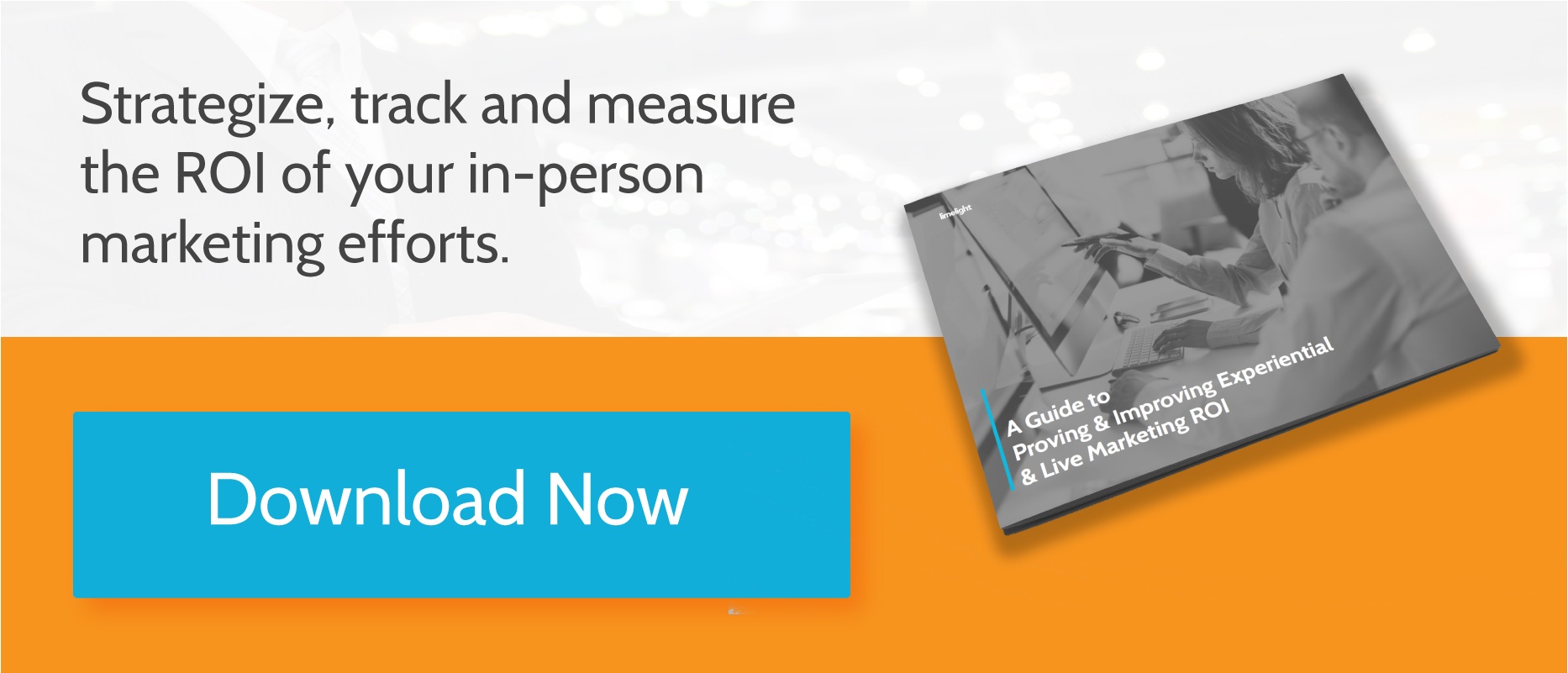How All-Star Teams Measure Experiential Marketing
.png?width=50&name=download%20(1).png) By
Julia Manoukian
·
3 minute read
By
Julia Manoukian
·
3 minute read
What matters is what’s measured. Even though there tends to be a great deal of subjectivity around measuring the success of live events, such as determining customer goodwill, audience vibe, mindshare, etc., in the end, working with hard data is the best path to improving your effectiveness.
There's not a single perfect answer to what you want to measure. Different groups in your organization will want answers to different kinds of questions. Presenting the right answers to the right groups will simplify planning for your next event.
What metrics will you use to measure the performance of your next experiential/in-person marketing event? How does it all translate to revenue?
We’ve put together some of the top Key Performance Indicators (KPIs) preferred by leading experiential marketers, broken dole by the role.
These KPIs will help you answer the hardest, most significant question of all: Was it all worth it in the end?
KPIs That Will Impress the C-Suite
ROI – Finance-minded execs normally want to quantify everything in terms of return on investment (ROI). Traditionally, marketing campaigns were hard to measure that way because the path to purchase includes many touchpoints.
Mindshare and engagement are still difficult to read, even by counting clicks and tracking visual heatmaps. KPIs that can help execs put a dollar value on initiatives include:
- Customer Acquisition Cost (CAC) of new customers
- Customer Retention Rate (CRR)
- Projected Value in Pipeline (VP)
When Producer at Trademark Event Productions Wendy Cook covered The Event Measurement and Data University talk at least year's Experiential Marketing Summit, she reported for brands not to forget brand advocacy, "or how likely they are to recommend you to another colleague, as well as cost avoidance, such as including a sales meeting as part of a user conference to make more efficient use of sales & marketing budgets."
The Holy Grail: ROI
If marketers truly want to calculate ROI, they'll need to take it a step further. With new digital technology, it is possible to track engagement in real time and determine the return on investment each event brings in. In order to determine an ROI baseline, experiential marketers need two things:
- CRM
- Experiential marketing software with lead aggregation capabilities
Then create a baseline by measuring the following:
- Integrate lead aggregation tool with CRM to track leads back to their original source.
- Tag leads directly to their original event source (ie, auto show, sampling event, test drive, etc.).
- After the event is over, you can run a query on sales.
- Add up the sales and divide by the cost of the event to get a baseline ROI.
Impressions are not ROI! To calculate true ROI for the C-Suite, you need two systems in place.
Top KPIs Requested at the VP Level
When making presentations to the VP of Marketing, you don’t have to worry about justifying the value of what you do generally. All you have to do is demonstrate the comparative success of individual campaigns. Your goto KPIs for the VP level:
- Social media engagement/sentiment
- Shares
- Responses
- Brand mentions
- Hashtags
- Follower growth rates after live events
- Event check-ins (number of attendees)
- Conversion rates (number of sign-ups vs attendees)
- Net promotor scores
- Brand & message familiarity
- Satisfaction survey results
- Attendee quality
User generated content (USG), especially social video, can be repurposed many times for webinars, commercials, testimonials, and future promotions.
The Essential KPIs That Marketing Teams Care About
When you are reviewing results with other team members and preparing for your next big event, you can dive much deeper into the data. Review KPIs like:
- Cost per Engagement (CPE)
- Conversion Ratio
Less tactical data that can be shared with your team internally:
- Time of event and year
- Number of activations
- Food
- Flow
A good way to determine how happy event attendees were is by interviewing staff. Measuring how well their interactions went is an indication of positive brand lift.
The View From the Outside
Every company must craft its own cocktail of critical KPIs based on their strategic goals. These may be very different from what you are used to measuring for online initiatives. For all face-to-face marketing events, including experiential marketing, sampling, test drives, sponsorships, events, kiosks, tradeshows, etc., your central concern should be customer experience. Online, you are primarily looking for traffic and time on page, while KPIs for live events should revolve around measuring how positive the experience was for attendees.
Look at events from the customer’s point of view. They don’t really care about how profitable the event was. They want to know that they will have a good time the next time you sponsor an event. Pay special attention to all KPIs that indicate customer sentiment, such as net promoter score (NPS), referral rates and first visit growth. These impact the social value of attending your events, aka bragging rights. When prospects see their own social lift just from mentioning your events, you know you’re on the right track.


